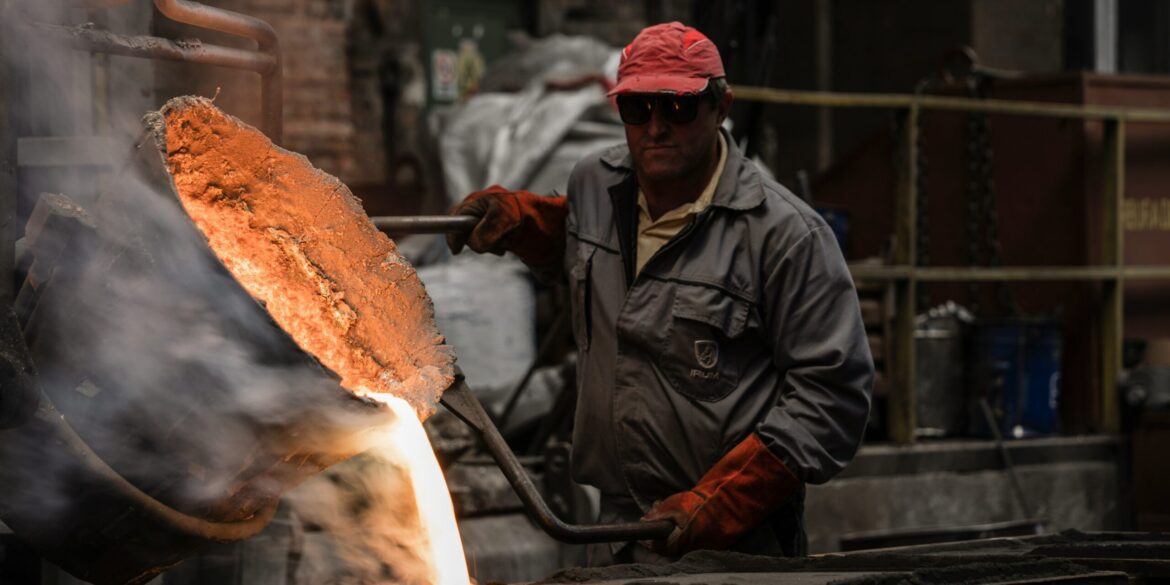On August 5, 2025, the U.S. government announced a decisive shift in its trade policy by imposing a 50% tariff on all aluminum imports while exempting refined copper from similar duties. The move marks a significant escalation in the administration’s broader push to prioritize domestic industrial revival, aligning with a conservative economic agenda that favors strategic protectionism. The policy reflects nuanced considerations around energy costs, domestic production capabilities, and the role of specific metals in national infrastructure and energy security.
The sharply higher aluminum tariffs are intended to shield U.S. smelters from low-cost foreign competition, particularly from China and the Gulf states. Aluminum is among the most energy-intensive metals to produce, with electricity accounting for nearly half the total production cost. This has long made U.S.-based aluminum production vulnerable to overseas producers operating with state-subsidized energy and labor. The new tariffs, issued under Section 232 of the Trade Expansion Act, were framed as essential for preserving the viability of the few remaining aluminum smelters in the United States. Industry players like Century Aluminum and Alcoa publicly endorsed the policy, arguing that without this level of protection, the domestic aluminum industry risked further collapse.
Read also: https://republicandigest.com/why-tech-earnings-may-be-the-best-wake%e2%80%91up-call-for-washington/
Unlike aluminum, refined copper was excluded from the tariff expansion. The exemption applies to cathodes, anodes, and liquefied copper products—critical feedstocks for a range of industries, including renewable energy, electronics, automotive manufacturing, and defense systems. By maintaining access to foreign-sourced refined copper, the administration aims to avoid disrupting sectors that are heavily reliant on copper’s conductive properties and integral role in clean energy infrastructure, such as electric vehicles, wind turbines, and solar panels.
The decision to exempt refined copper is also rooted in energy economics. Copper refining is significantly less energy-intensive than aluminum smelting, making U.S. production somewhat more competitive, though still limited. Domestic copper mining remains robust, particularly in states like Arizona and Utah, but the country lacks sufficient refining capacity to meet industrial demand. Building out this capacity would require substantial investment and regulatory streamlining, which the administration has signaled it supports but sees as a long-term goal rather than an immediate priority.
Markets responded quickly to the tariff announcements. Copper futures dropped more than 20% on the Comex exchange following the news, as traders who had anticipated across-the-board tariffs offloaded positions. The differential between U.S. and global copper prices collapsed, eroding the value of inventories that had been stockpiled in anticipation of trade restrictions. Analysts noted that the refined copper exemption sent a clear signal that the government intends to manage trade policy in a more targeted, differentiated manner rather than applying blanket protections across entire commodity classes.
Despite the current exemption, industry insiders caution that refined copper may not remain tariff-free indefinitely. Sources close to the administration suggest that a phased tariff schedule could be introduced beginning in 2027, possibly starting at 15% and rising to 30% by the end of the decade, contingent on domestic refining capacity expansions. Additionally, new retention quotas require that an increasing share of domestically mined copper and recycled scrap stay within U.S. borders, with targets set to reach 40% by 2029. These measures aim to gradually localize more of the copper supply chain without immediately disrupting industrial output.
The broader strategic rationale behind the policy reflects a blend of economic nationalism and supply chain security. By raising tariffs on aluminum but sparing refined copper, the administration is attempting to protect high-energy industries while ensuring access to critical materials needed for high-tech and energy applications. This bifurcated approach allows for industrial protection without triggering downstream inflationary pressures or bottlenecks in manufacturing sectors that are pivotal to economic growth and national defense.
The ripple effects of the aluminum tariffs are already being felt in consumer goods sectors. Molson Coors, for example, recently issued a downward revision to its earnings forecast, citing increased costs from aluminum can production as a direct result of the new tariffs. The company noted that it had absorbed a portion of the cost increase rather than passing it entirely onto consumers, impacting its profit margins. Such examples illustrate how upstream trade policies can have tangible downstream consequences, even in industries far removed from raw material extraction.
In contrast, industries reliant on copper—such as solar panel manufacturers, data center developers, and electric vehicle producers—welcomed the exemption. By avoiding a spike in input costs, these sectors are better positioned to continue scaling operations, particularly as demand for electrification and clean energy infrastructure accelerates. The exemption helps ensure that the U.S. remains competitive in global technology supply chains, even as it reassesses its approach to industrial self-reliance.
The contrasting treatment of aluminum and copper in the latest trade policy reflects a calculated strategy rooted in energy efficiency, industrial capacity, and market dynamics. Aluminum’s tariff increase is a bold attempt to revive a faltering domestic industry, while copper’s exemption acknowledges current economic realities and the need for stable, affordable access to strategic materials. Whether this balance holds in the years ahead will depend on how successfully the U.S. can rebuild its refining and manufacturing base—and whether future administrations choose to expand or roll back these protections.

